From DevOps to NoOps: The Future of Automation in Software Development
 Anup kafle
Anup kafle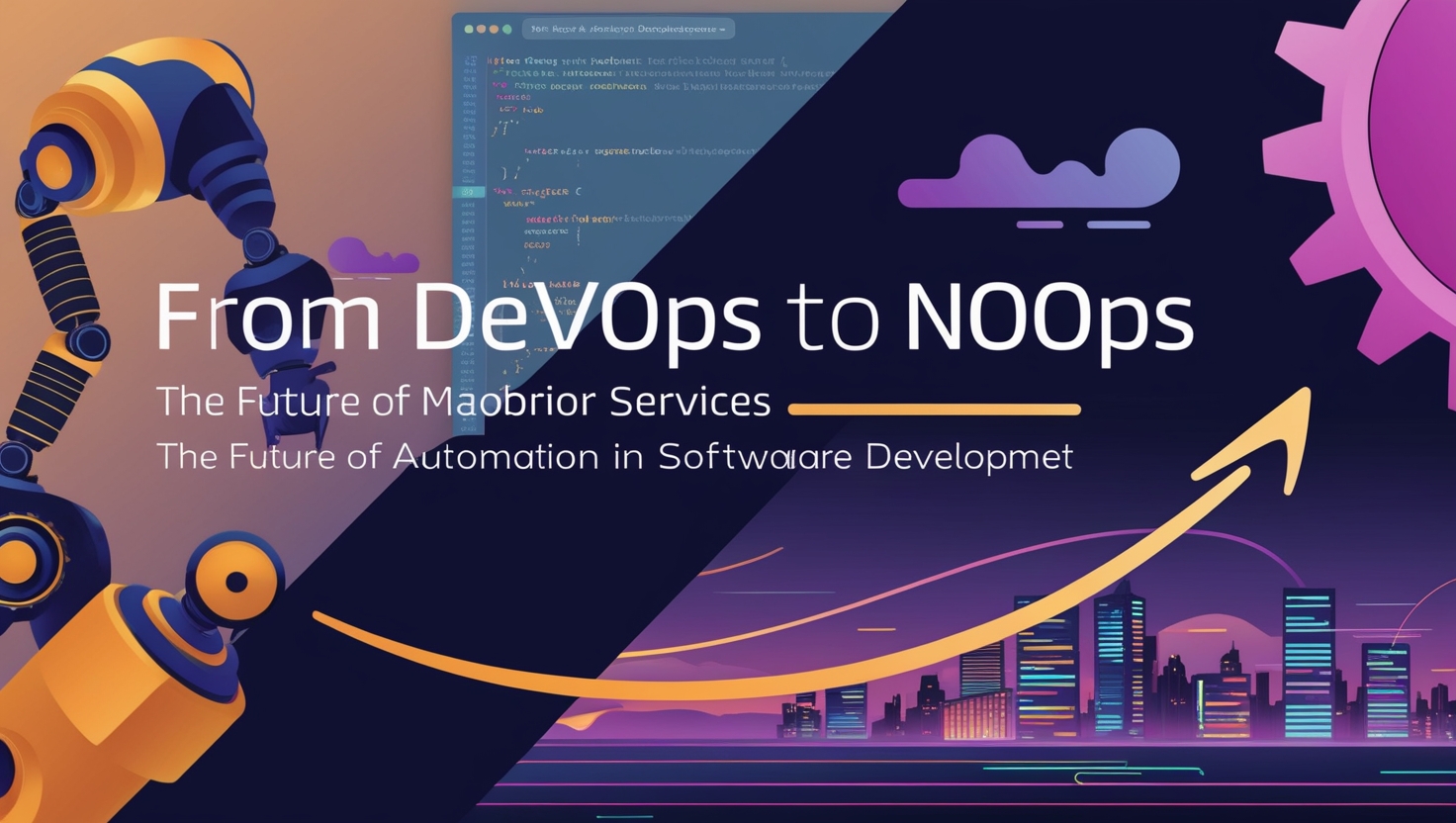
Introduction:
The evolution from DevOps to NoOps represents a shift toward eliminating traditional IT operations through extensive automation, thus reducing the operational burden on developers and allowing them to focus more on delivering higher-value aspects of software development. Companies like Netflix, Airbnb, Spotify, and Slack are at the forefront of this movement, adopting various NoOps principles to streamline operations.
The Evolution from DevOps to NoOps:
DevOps has transformed the collaboration between development and operational teams, optimizing both the creation and deployment phases of software. NoOps extends this philosophy to its logical endpoint: the automation of operational tasks to such an extent that the operational activities are almost invisible.
Core Principles of NoOps:
Full Automation: Everything from resource allocation to application deployment and network adjustments is automated.
Proactive Monitoring and Self-Healing: Systems are not only monitored automatically but can correct themselves without human intervention.
Cloud-native Infrastructure: Emphasizes using solutions like serverless computing to minimize traditional operational management.
Purpose:
- The main purpose of this article is to perform performance comparision between NoOps and DevOps using AWS Services.
Background:
In this section we will be familiar with DevOps and NoOps cloud model in Amazon Web Service(AWS)
DevOps Based Model
In the AWS ecosystem, DevOps methodologies are greatly enhanced by services like Amazon EC2 and Amazon EKS, which cater to distinct needs while supporting rapid and efficient application development and deployment. Amazon EC2 (Elastic Compute Cloud) is a cornerstone of AWS, offering flexible, virtual computing environments that users can customize and control. EC2 allows for the configuration of processing power, memory, and storage that suits diverse application needs, supported by various pricing options including On-Demand, Reserved, and Spot Instances, which help optimize costs based on usage patterns. Additionally, EC2's integration with AWS security and networking services ensures robust protection and scalability for applications.
On the other hand, Amazon EKS (Elastic Kubernetes Service) streamlines the deployment, scaling, and management of containerized applications using Kubernetes, without the need for installing or operating Kubernetes control planes. This service is especially beneficial for modern applications designed around microservices architectures that require dynamic scaling and high availability. EKS seamlessly integrates with essential AWS services such as Elastic Load Balancing, Amazon VPC, and IAM, enhancing both the security and functionality of container deployments. Furthermore, although EKS introduces an additional cost for managing the Kubernetes infrastructure, it significantly reduces the complexity and overhead associated with manual Kubernetes management.
NoOps Based Model
The NoOps (no operations) model, exemplified by AWS Lambda and Function as a Service (FaaS), represents a paradigm shift in software development, minimizing or eliminating traditional operational tasks through automation and abstraction. AWS Lambda, a serverless computing service, allows developers to run code in response to events without managing servers, perfectly aligning with the NoOps approach by automating scaling, patching, and managing of compute resources. Lambda supports multiple programming languages, triggers functions via events from AWS services or third-party apps, and automatically scales to match demand. This model drastically reduces operational management, enabling rapid deployment and significant cost efficiency due to its pay-forwhat-you-use pricing structure. Lambda is ideal for a variety of applications, from web backends to real-time data processing and IoT services, facilitating a focus on creating business value rather than infrastructure management, thus accelerating innovation and efficiency in development processes.
Methodology
To understand the performance differences between the DevOps and NoOps deployment strategies we will create an app that calculates the prime number between some intervals and deploy using AWS Lambda and AWS Elastic Kubernetes Service and test the load using Jmeter, an API testing tool by Apache.
Prime Number Calculator:
To effectively compare the performance and various metrics of NoOps and DevOps approaches, I utilized Amazon Web Services (AWS) to demonstrate each model. Specifically, AWS Elastic Kubernetes Service (EKS) was employed as an example of a DevOps-oriented service, and AWS Lambda was used to illustrate the NoOps model.
The application chosen for this comparison was a simple prime number calculator that identifies all prime numbers within a given range, specified by a start and an end interval. This application was developed using Flask, a lightweight web framework in Python.
Here’s how the deployment proceeded:
Development of the Flask Application: The application was coded in Python and designed to accept two parameters: 'start' and 'end'. It calculated and returned all prime numbers within this interval.
Deployment on AWS Lambda (NoOps): The Flask application was packaged and deployed on AWS Lambda, which abstracts away most server management tasks. This deployment was used to evaluate how the NoOps approach simplifies operations, particularly in terms of server provisioning, scaling, and management.
Deployment on AWS EKS (DevOps): The same Flask application was containerized using Docker and deployed on a Kubernetes cluster managed by AWS EKS. This setup highlighted the level of control and flexibility provided by a DevOps approach, which can be essential for handling complex application architectures that require fine-tuned scaling and management.
Performance Metrics and Comparison: After deploying the application on both platforms, key performance metrics such as deployment time, scalability, response time, and resource utilization were analyzed and compared. This comparison aimed to illustrate the practical impacts of choosing NoOps versus DevOps in a cloud environment.
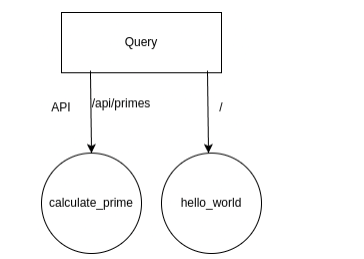
Figure: API to calculate prime number
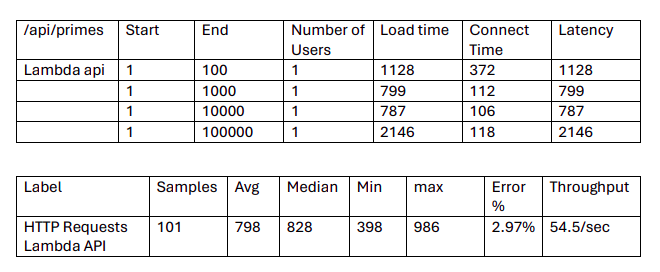
Table: Different metrics for lambda api on /api/primes endpoint
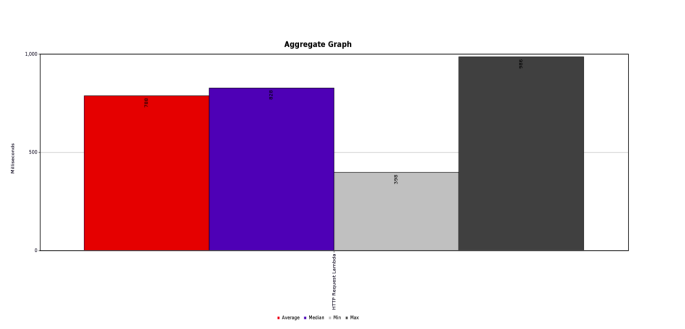
Figure: Aggregate Graph for Lambda Endpoint
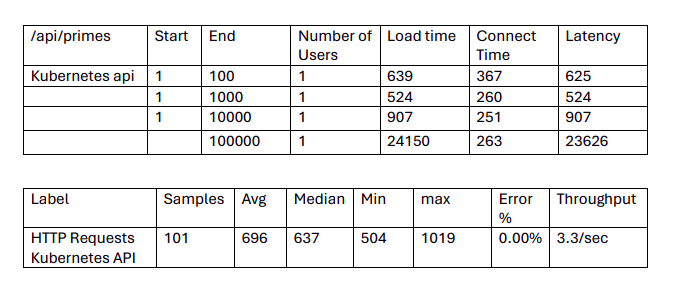
Table: Different metrics for Kubernetes api on /api/primes endpoint
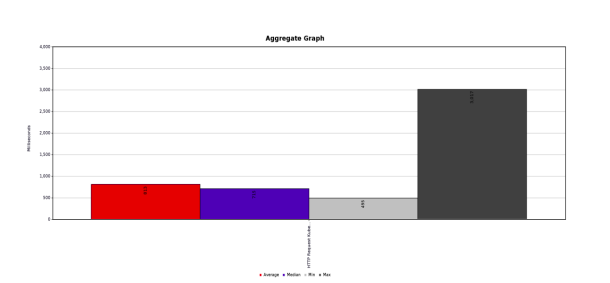
Figure: Aggregate Graph for Lambda Endpoint
Performance Metrics:
Load Time, Connect Time, and Latency:
Lambda API: Load time and latency for the Lambda API are nearly identical, suggesting that the major component of load time is the actual processing (latency). There is a noticeable increase in both metrics as the number of primes (End value) increases, peaking at 100,000 with a load time and latency of 2146 ms.
Kubernetes API: Similarly, Kubernetes shows increased load time and latency with the number of primes, but notably, the values spike drastically at 100,000 primes to 24150 ms, suggesting a significant degradation in performance under high computational load.
Connect Time
- The connect time for both Lambda and Kubernetes is relatively low compared to load times, indicating that the overhead for establishing a connection is minimal. Kubernetes does show slightly lower connection times, which could be due to differences in network configuration or the persistent nature of containers compared to the stateless deployment of Lambda.
Error Rates
- The Lambda API shows an error rate of 2.97%, which suggests some failures under certain conditions. In contrast, the Kubernetes API shows a 0.00% error rate, indicating more stable performance in handling requests without failures.
Throughput
- The Lambda API shows a higher throughput of 54.5 requests per second compared to Kubernetes' 3.3 requests per second. This significant difference suggests that Lambda can handle a greater number of requests concurrently, likely benefiting from AWS's auto-scaling capabilities inherent to Lambda services.
Analysis
Scalability: Lambda demonstrates better scalability with higher throughput, suggesting it is more capable of handling spikes in traffic without manual intervention for scaling.
Performance Under Load: Kubernetes API performance deteriorates significantly when dealing with a large number (100,000) of primes, indicating potential issues in handling heavy computational tasks efficiently.
Reliability: Kubernetes shows a better error rate, indicating it might be more reliable for consistent performance, particularly in scenarios where error rates are critical.
Cost Implications: While not explicitly mentioned, Lambda's pricing model (based on requests and compute time) could potentially be more cost-effective for applications with variable traffic. Kubernetes may incur higher costs due to continuous running of cluster nodes.
Conclusion
The performance metrics comparison between AWS Lambda and AWS Kubernetes (EKS) for the /api/primes Flask API reveals distinct advantages and disadvantages depending on the specific use case and operational requirements:
AWS Lambda excels in scalability and throughput, demonstrating robust performance particularly under variable load conditions. It is capable of handling a high number of requests per second, indicating efficient use of resources and rapid auto-scaling. This makes Lambda an excellent choice for applications with unpredictable traffic patterns and those that do not require a persistent state. However, there is a concern with a higher error rate, which suggests that for extremely sensitive applications, more robust error handling or configuration may be needed.
AWS Kubernetes (EKS), on the other hand, provides a more stable error-free operation as indicated by the zero error rate in the tests, but struggles with performance under heavy computational loads, as seen with the significant latency increase at 100,000 primes. This points to Kubernetes being more suitable for applications where consistent performance and more extensive customization are required. Additionally, it might be better for long-running processes where the overhead of starting up a new instance, as in the case of Lambda, could be detrimental.
Cost-effectiveness will vary: Lambda may generally be more cost-efficient for workloads with high peaks and low troughs of activity due to its pay-per-use model. Kubernetes may entail higher baseline costs due to the need to run some resources continuously but could potentially offer cost savings through more detailed control over resource allocation and usage.
Throughput and Performance Under Load: Lambda's superior throughput makes it suitable for high-demand applications, while Kubernetes may require additional optimizations and resource allocation strategies to handle similar loads effectively.
Subscribe to my newsletter
Read articles from Anup kafle directly inside your inbox. Subscribe to the newsletter, and don't miss out.
Written by

Anup kafle
Anup kafle
Cloud Engineer | AWS Community Builder